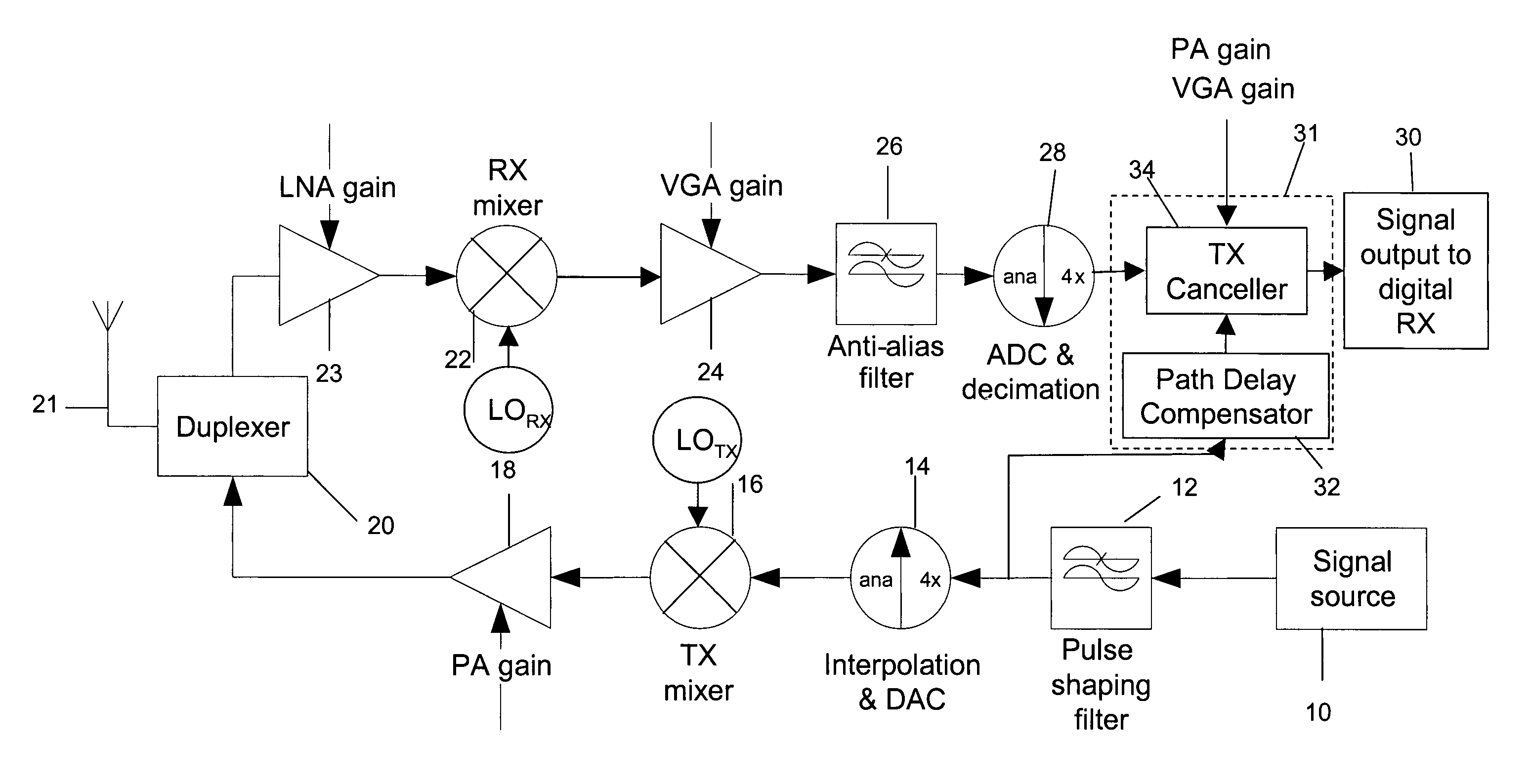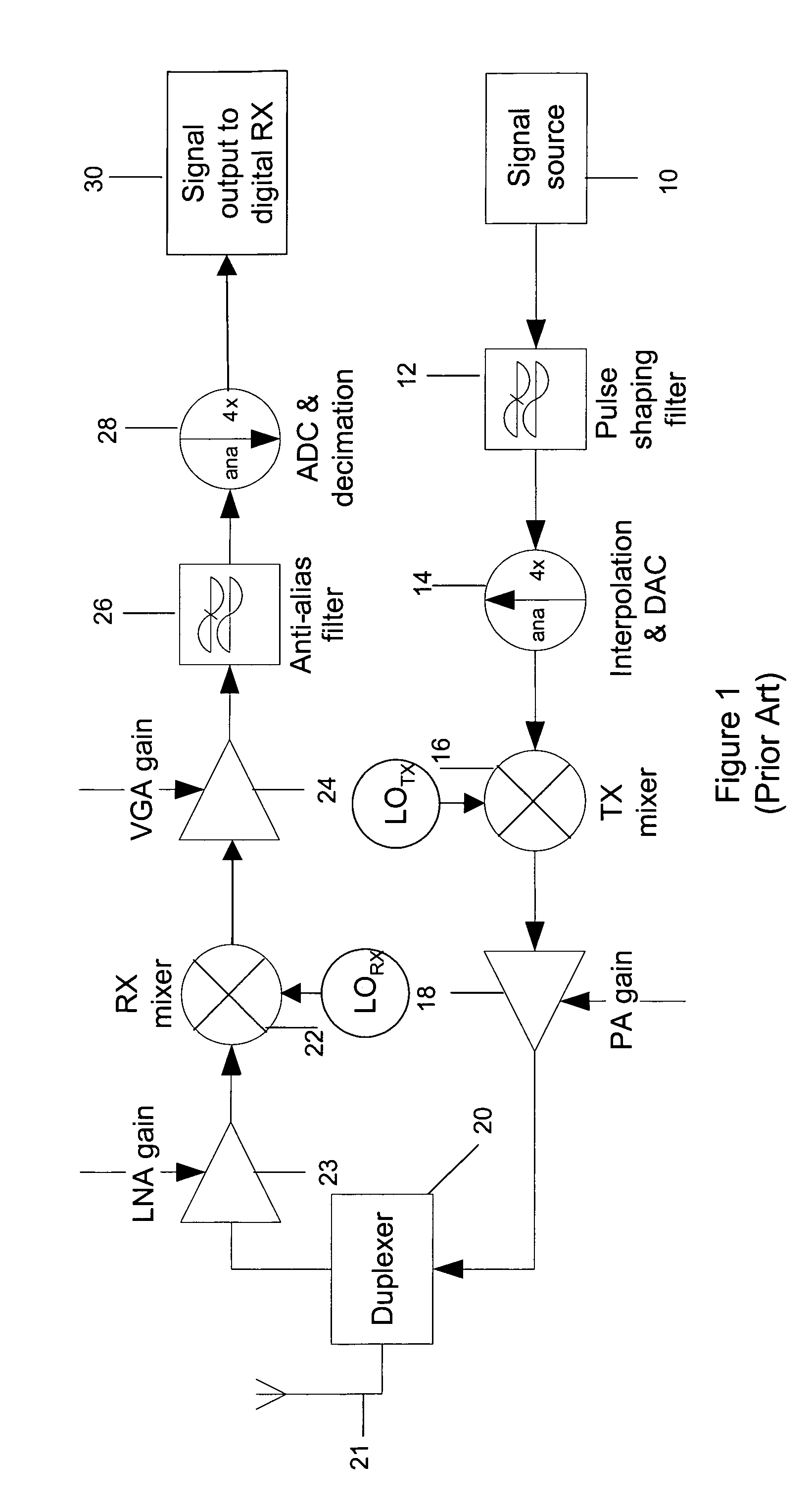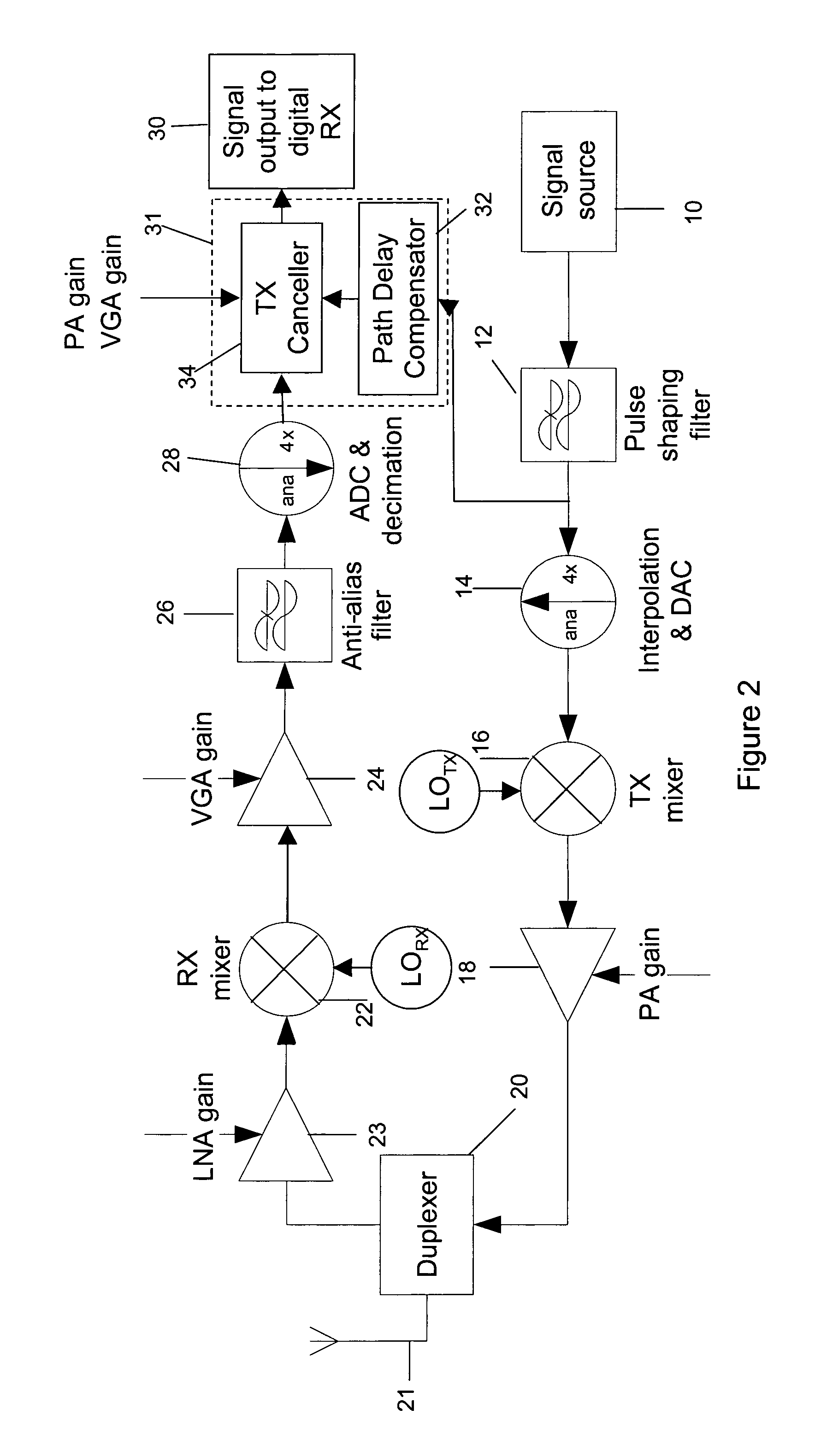Method and apparatus for cross-talk cancellation
a cross-talk cancellation and cross-talk technology, applied in the direction of transmission, frequency-division multiplex details, electrical equipment, etc., can solve the problem of cross-talk between the transmission and receiver chain, transmission signal, transmission signal, etc., to remove or reduce the transmit cross-talk signal
- Summary
- Abstract
- Description
- Claims
- Application Information
AI Technical Summary
Benefits of technology
Problems solved by technology
Method used
Image
Examples
first embodiment
[0048]FIG. 3 is a block diagram of the internal processing performed by the cross-talk canceller 34 in the invention. In this embodiment, the receiver gain and transmitter gain control signals are not required, and need not be fed to the cross-talk canceller 34.
[0049]With reference to FIG. 3, the transmit signal is received at the “TX in” input, having been delayed by the path delay compensation block 32. The input transmit signal is then put into processing block 42, which acts to perform a squaring operation thereon. In this respect, it will be recalled that it is the square of the transmit signal which is the main cross-talk signal of interest, due to the second order inter-modulation distortion product, or self mixing in the receive mixer 22. The squared transmit signal, u(n) is then fed to a subtractor 44.
[0050]The second input to the subtractor 44 is the received signal, d(n), received at the cross-talk canceller 34 from down-sampler 20. It will be appreciated here that the re...
second embodiment
[0059]However, it should be noted that with a fixed filter transfer function such as present in filter 46, it is only possible to adapt the transmit signal to match the transmit cross-talk signal if the processing applied to the transmit cross-talk signal is substantially fixed i.e. the anti-alias filter 26 has a substantially fixed and known transfer function, and the gains applied to the transmit cross-talk signal in the transmit and receive amplifiers are constant. If any of these factors are variable, such as may often be the case with the gains applied in the transmitter power amplifier and receiver variable gain amplifier, or where the filter transfer function is not known, or varies over time, then the output signal y(n) from the filter 46 may not then accurately represent the transmit cross-talk signal at the point in the receiver signalling chain where the cross-talk canceller is located. To address the second of these problems, i.e. where the filter transfer function is no...
third embodiment
[0062]There remains, however, the problem of the gains which are applied to the receive signal, and hence the cross-talk signal, being variable. This presents problems even for an adaptive filter that the dynamic range of the filter taps needs to be very large to compensate for signal level changes. Additionally, the adaptation rate of the filter may not be quick enough to compensate for rapid gain changes. Therefore, in the third embodiment, described next, the filter 46 is supplemented by additional amplifiers, to replicate the transmitter and receiver amplifier gains applied to the transmit cross-talk signal.
[0063]A third embodiment of the invention is therefore shown in FIG. 5. In particular, FIG. 5 shows the arrangement of the cross-talk canceller 34 of the third embodiment, the remainder of the elements of the third embodiment being the same as described previously with respect to FIGS. 1 and 2.
[0064]As shown in FIG. 5 the cross-talk canceller 34 according to the third embodim...
PUM
 Login to View More
Login to View More Abstract
Description
Claims
Application Information
 Login to View More
Login to View More - R&D
- Intellectual Property
- Life Sciences
- Materials
- Tech Scout
- Unparalleled Data Quality
- Higher Quality Content
- 60% Fewer Hallucinations
Browse by: Latest US Patents, China's latest patents, Technical Efficacy Thesaurus, Application Domain, Technology Topic, Popular Technical Reports.
© 2025 PatSnap. All rights reserved.Legal|Privacy policy|Modern Slavery Act Transparency Statement|Sitemap|About US| Contact US: help@patsnap.com



